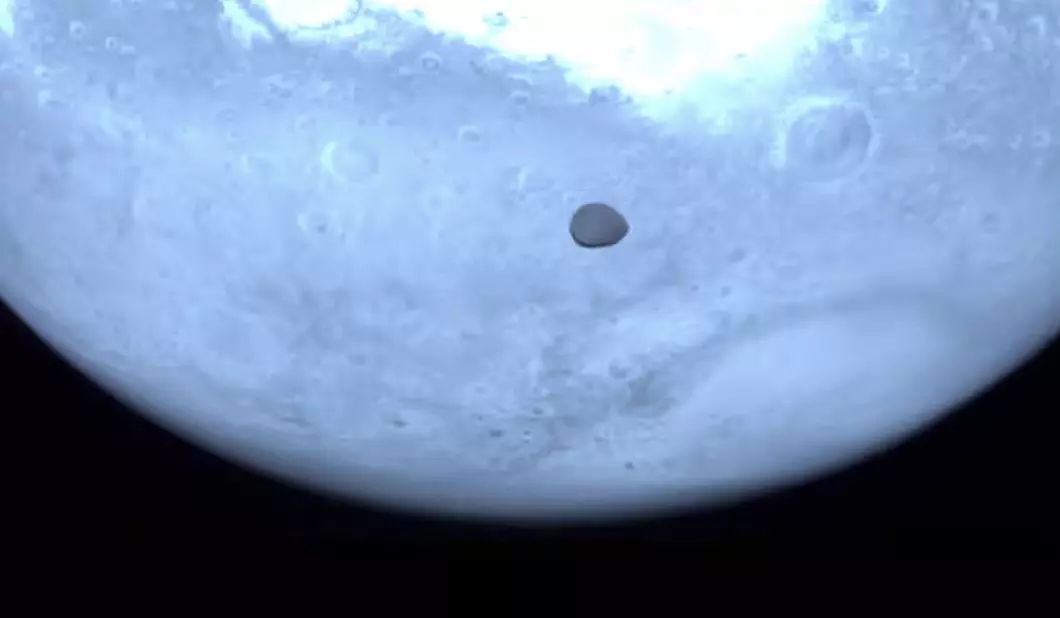European Probe captures image of Deimos, Mars’ tidally locked 8-Mile-wide moon
European Probe captures Deimos about 8 miles wide and tidally locked with Mars

A European spacecraft has snapped rare images of Mars’ lesser-known moon, Deimos, while speeding past the red planet on its journey to study distant asteroids.
The Hera probe, launched by the European Space Agency (ESA), flew by Mars at a staggering speed of 20,000 mph, capturing detailed shots of the 8-mile-wide Deimos from a distance of 620 miles. This marks one of the few times scientists have had a close-up look at the small, lumpy moon, which orbits Mars alongside its larger sibling, Phobos.
Unlocking the Secrets of Deimos
Unlike Phobos, which is more frequently studied, Deimos remains somewhat of a mystery. Scientists believe it could be the result of an ancient impact on Mars or a captured asteroid. The moon is also tidally locked, meaning the same side always faces the planet.
Hera’s Hyperscout H imager took a striking photo during its gravity-assist flyby, showing Mars as a light blue sphere with Deimos appearing as a small dark spot. The image also features notable Martian landmarks, including:
Terra Sabaea – a bright region near the equator
Huygens and Schiaparelli craters – both spanning about 280 miles wide
Hellas Basin – one of the largest impact craters in the solar system
Destination: The Dimorphos Asteroid
Hera is now on its way to Dimorphos, a 150-meter-wide asteroid orbiting a larger space rock, Didymos. In 2022, NASA’s Dart probe crashed into Dimorphos, successfully altering its orbit – a test of whether we can deflect space rocks that might threaten Earth.
Once Hera reaches the asteroid pair in December next year, it will closely examine Dimorphos’ surface and structure, providing crucial insights into planetary defense strategies.
This mission marks another exciting step in humanity’s efforts to explore space, safeguard Earth, and uncover the secrets of our cosmic neighborhood.

